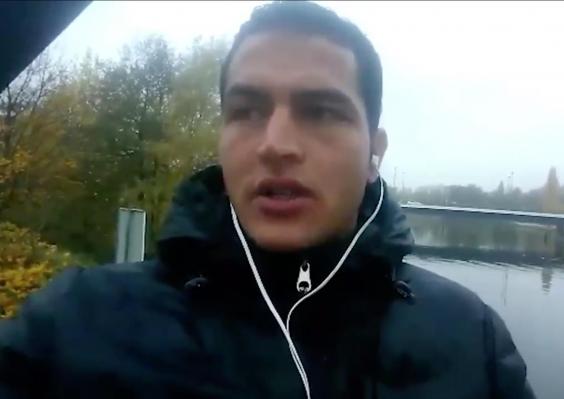Scientists discover dark matter lost since birth of universe
By Zee Media Bureau |
Last Updated: Saturday, December 31, 2016 - 08:24
Moscow: Scientists, for the first time, have been able to measure the amount of dark matter the Universe has lost since the Big Bang some 13.7 billion years ago.
About five per cent of the elusive dark matter in the universe has been lost till now, they calculated.
The finding is also likely to explain one of the biggest mysteries in physics - why our Universe appears to function in a slightly different way than it did in the years just after the Big Bang. It could also explain the origin of dark matter and how it might evolve or decay in future.
The study could also help astrophysicists explain how the universe has changed over time. The findings may show how the universe's rate of expansion has varied and what happened in the universe's first few hundred thousand years.
Most of the matter in the universe seems to be invisible and largely intangible; it holds galaxies together and only interacts with the more familiar matter hrough its gravitational pull.
"The discrepancy between the cosmological parameters in the modern Universe and the Universe shortly after the Big Bang can be explained by the fact that the proportion of dark matter has decreased," Igor Tkachev, head of the of the Department of Experimental Physics at the Institute for Nuclear Research in Russia told PTI.
"We have now, for the first time, been able to calculate how much dark matter could have been lost and what the corresponding size of the unstable component would be," Tkachev said.
Their study suggests that no more than 5 percent of the current amount of dark matter in the universe, could have been lost since the Big Bang.
According to data from the European Space Agency (ESA)’s Planck space telescope, the proportion of dark matter in the universe is 26.8 per cent, the rest is “ordinary” matter (4.9 per cent) and dark energy (68.3 per cent).
The properties of dark matter could potentially help scientists solve the problem that arose after studying observations from the Planck telescope.
This device accurately measured the fluctuations in the temperature of the cosmic microwave background radiation – the “echo” of the Big Bang.
By measuring these fluctuations, researchers were able to calculate key cosmological parameters using observations of the universe in the recombination era – about 300,000 years after the Big Bang.
But even though the majority of matter predicted to be in the Universe is actually dark, little is known about dark matter - in fact, scientists till now haven't been able to prove that it actually exists.
(With PTI inputs)



Movie/Album: Maut Ki Sazaa (1991)
Singers: Anup Jalota
Lyricist: Maya Govind
Song Type/Mood: Sad
Music Composer: Anup Jalota
Music Director: Anup Jalota
comment:-
who said he is not a joker also ?
About five per cent of the elusive dark matter in the universe has been lost till now, they calculated.
The finding is also likely to explain one of the biggest mysteries in physics - why our Universe appears to function in a slightly different way than it did in the years just after the Big Bang. It could also explain the origin of dark matter and how it might evolve or decay in future.
The study could also help astrophysicists explain how the universe has changed over time. The findings may show how the universe's rate of expansion has varied and what happened in the universe's first few hundred thousand years.
Most of the matter in the universe seems to be invisible and largely intangible; it holds galaxies together and only interacts with the more familiar matter hrough its gravitational pull.
"The discrepancy between the cosmological parameters in the modern Universe and the Universe shortly after the Big Bang can be explained by the fact that the proportion of dark matter has decreased," Igor Tkachev, head of the of the Department of Experimental Physics at the Institute for Nuclear Research in Russia told PTI.
"We have now, for the first time, been able to calculate how much dark matter could have been lost and what the corresponding size of the unstable component would be," Tkachev said.
Their study suggests that no more than 5 percent of the current amount of dark matter in the universe, could have been lost since the Big Bang.
According to data from the European Space Agency (ESA)’s Planck space telescope, the proportion of dark matter in the universe is 26.8 per cent, the rest is “ordinary” matter (4.9 per cent) and dark energy (68.3 per cent).
The properties of dark matter could potentially help scientists solve the problem that arose after studying observations from the Planck telescope.
This device accurately measured the fluctuations in the temperature of the cosmic microwave background radiation – the “echo” of the Big Bang.
By measuring these fluctuations, researchers were able to calculate key cosmological parameters using observations of the universe in the recombination era – about 300,000 years after the Big Bang.
But even though the majority of matter predicted to be in the Universe is actually dark, little is known about dark matter - in fact, scientists till now haven't been able to prove that it actually exists.
(With PTI inputs)


Singers: Anup Jalota
Lyricist: Maya Govind
Song Type/Mood: Sad
Music Composer: Anup Jalota
Music Director: Anup Jalota
comment:-
who said he is not a joker also ?


